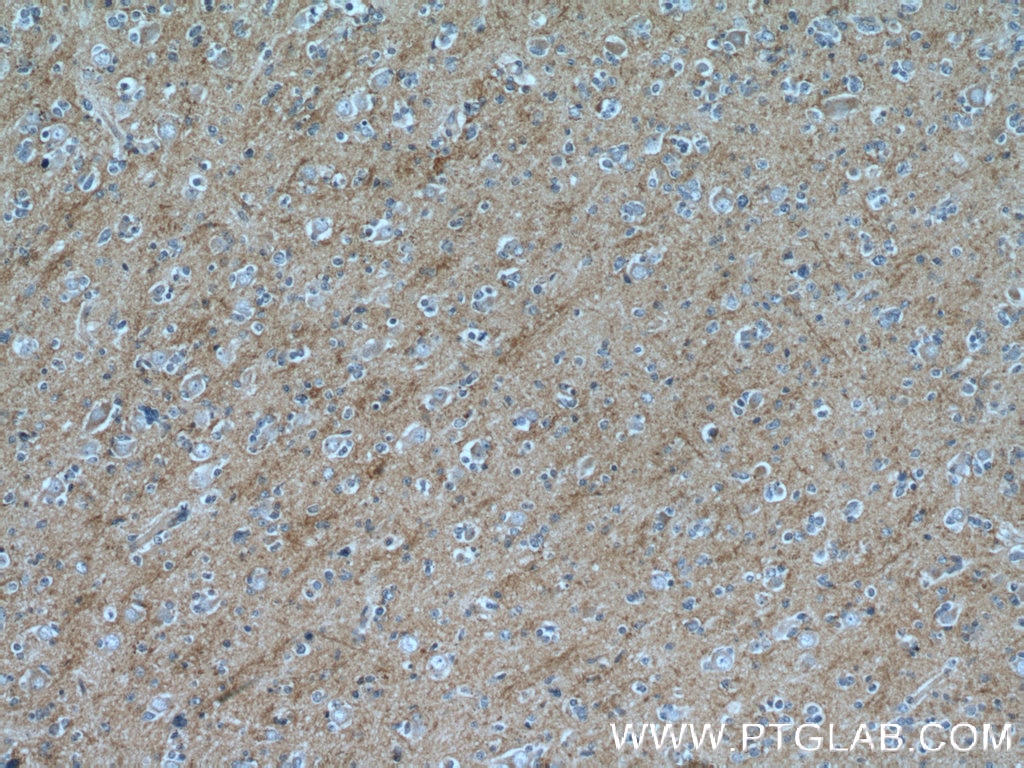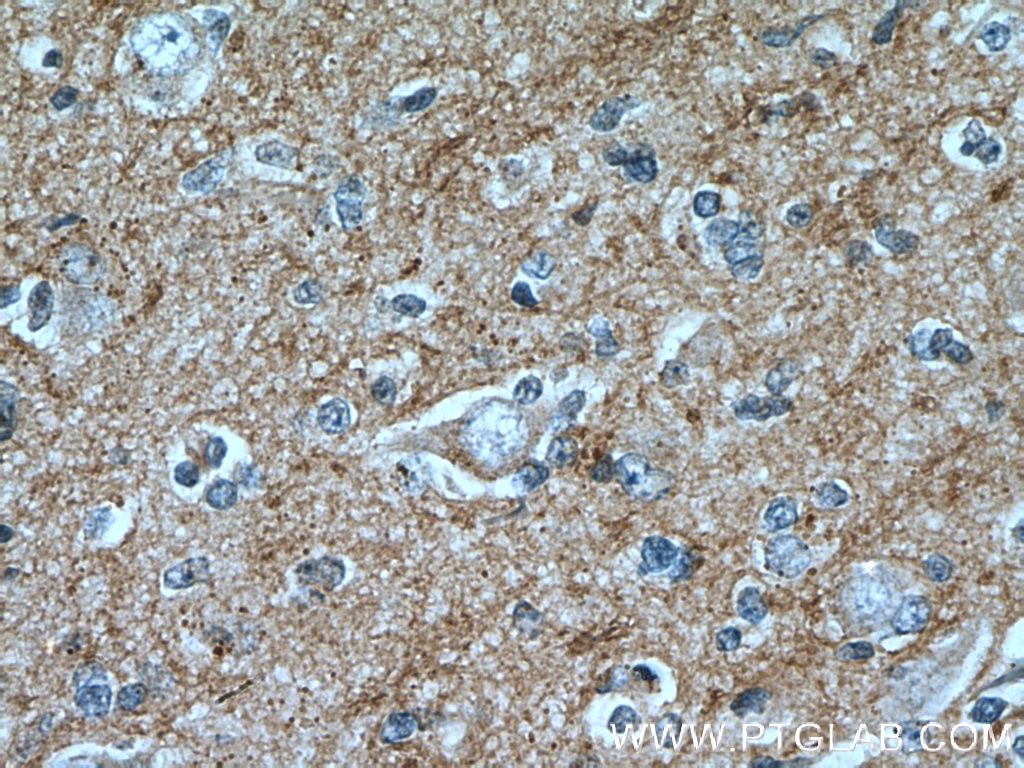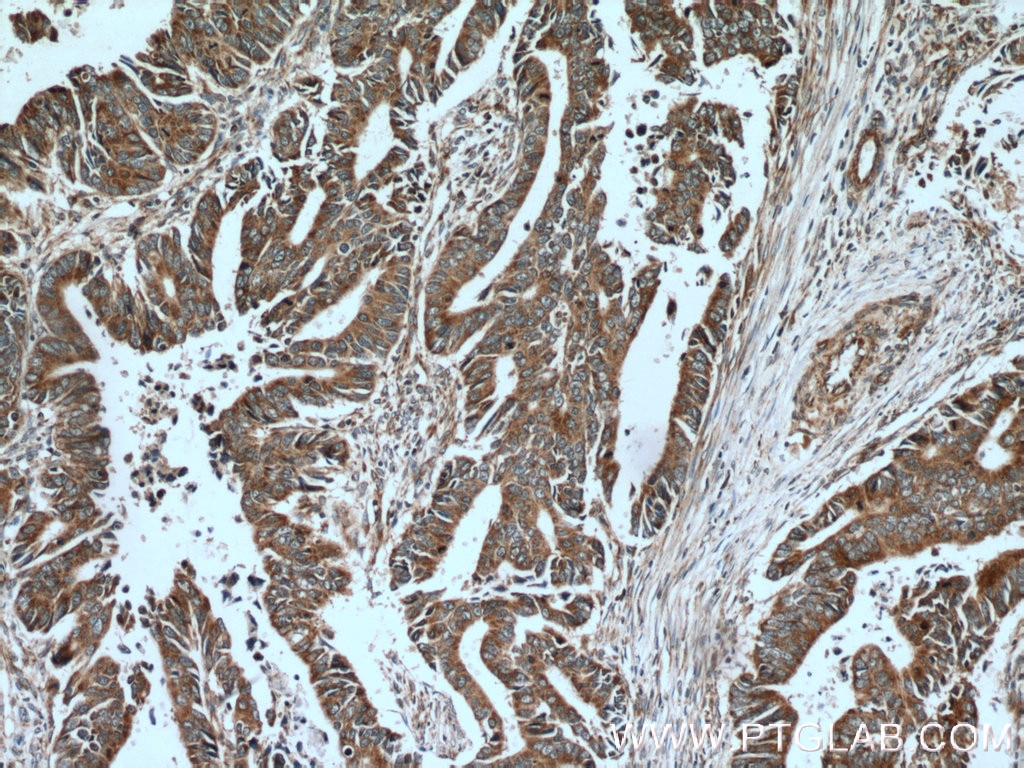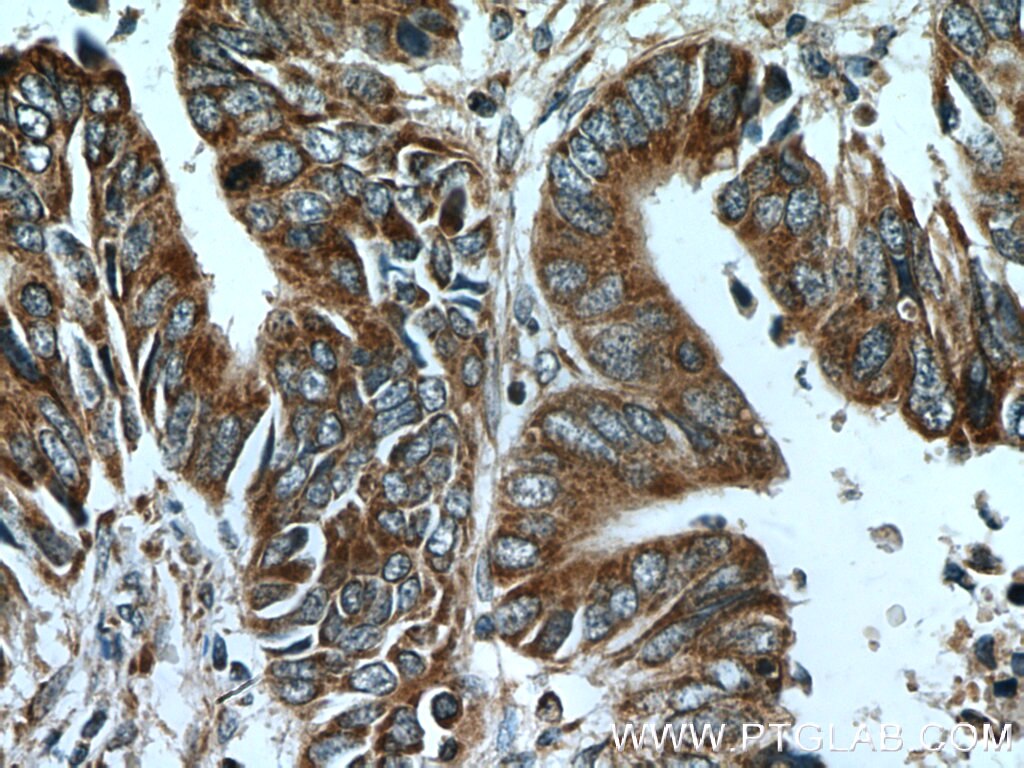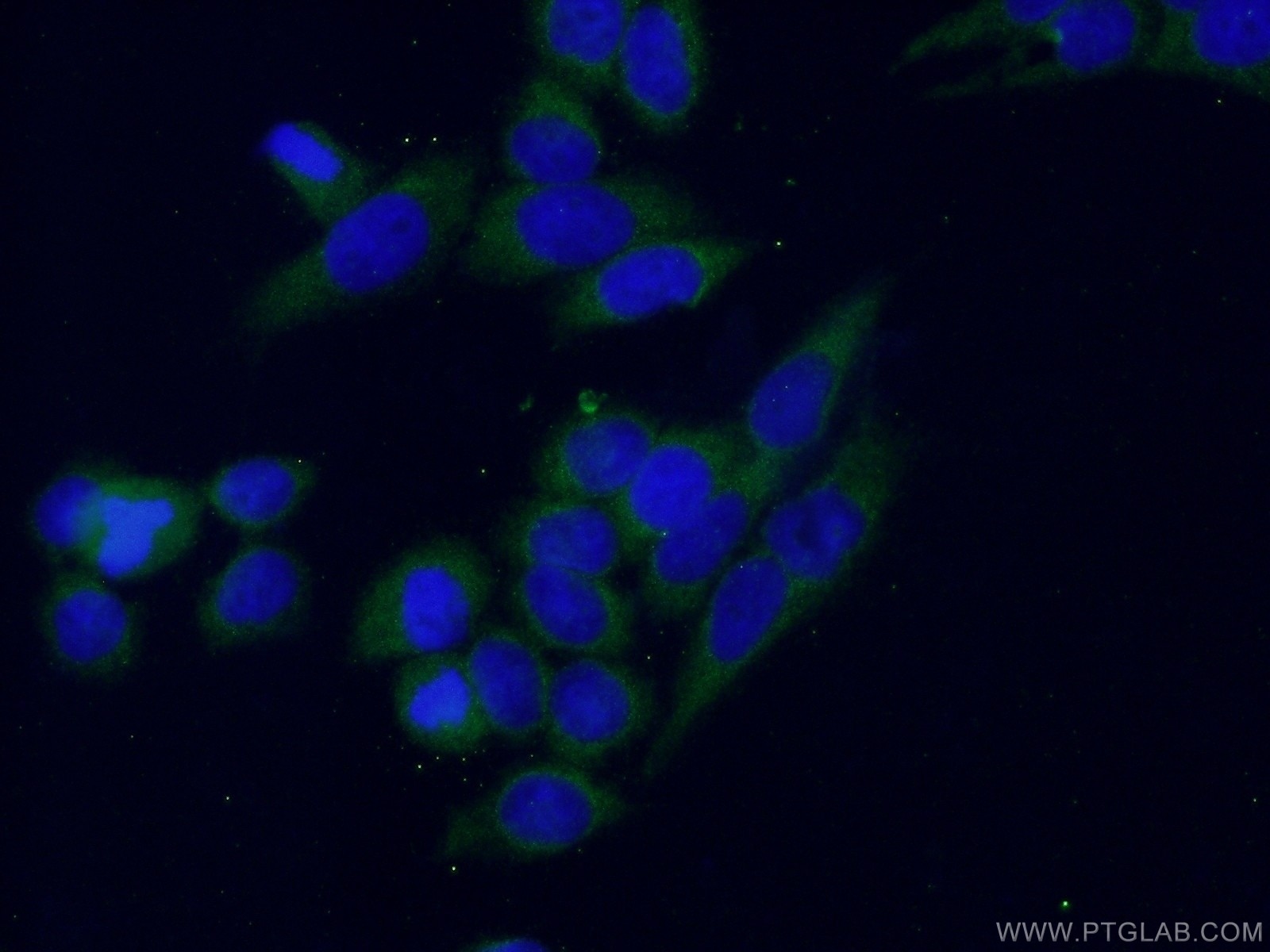- Phare
- Validé par KD/KO
Anticorps Polyclonal de lapin anti-CTGF
CTGF Polyclonal Antibody for ELISA
Hôte / Isotype
Lapin / IgG
Réactivité testée
Humain, souris et plus (3)
Applications
WB, IHC, IF, ELISA
Conjugaison
Non conjugué
N° de cat : 23936-1-AP
Synonymes
Galerie de données de validation
Applications publiées
| KD/KO | See 5 publications below |
| WB | See 82 publications below |
| IHC | See 25 publications below |
| IF | See 12 publications below |
| ELISA | See 1 publications below |
Informations sur le produit
23936-1-AP cible CTGF dans les applications de WB, IHC, IF, ELISA et montre une réactivité avec des échantillons Humain, souris
| Réactivité | Humain, souris |
| Réactivité citée | rat, canin, Humain, porc, souris |
| Hôte / Isotype | Lapin / IgG |
| Clonalité | Polyclonal |
| Type | Anticorps |
| Immunogène | CTGF Protéine recombinante Ag21008 |
| Nom complet | connective tissue growth factor |
| Masse moléculaire calculée | 349 aa, 38 kDa |
| Poids moléculaire observé | 38 kDa |
| Numéro d’acquisition GenBank | BC087839 |
| Symbole du gène | CTGF |
| Identification du gène (NCBI) | 1490 |
| Conjugaison | Non conjugué |
| Forme | Liquide |
| Méthode de purification | Purification par affinité contre l'antigène |
| Tampon de stockage | PBS with 0.02% sodium azide and 50% glycerol |
| Conditions de stockage | Stocker à -20°C. Stable pendant un an après l'expédition. L'aliquotage n'est pas nécessaire pour le stockage à -20oC Les 20ul contiennent 0,1% de BSA. |
Informations générales
CTGF, also known as CCN2 or connective tissue growth factor, is a member of the CCN family of matricellular proteins. CTGF, a cysteine-rich, matrix-associated, heparin-binding protein, is widely expressed in various human tissues and organs. CTGF has important roles in many biological processes, including cell adhesion, migration, proliferation, angiogenesis, skeletal development, and tissue wound repair, and is critically involved in fibrotic disease and several forms of cancers. In western blotting, there are three different forms of CTGF reported: monomeric forms at approximately 36-38 kDa, homodimeric forms at approximately 70 kDa, and lower molecular mass fragment forms.
Protocole
| Product Specific Protocols | |
|---|---|
| WB protocol for CTGF antibody 23936-1-AP | Download protocol |
| IHC protocol for CTGF antibody 23936-1-AP | Download protocol |
| IF protocol for CTGF antibody 23936-1-AP | Download protocol |
| Standard Protocols | |
|---|---|
| Click here to view our Standard Protocols |
Publications
| Species | Application | Title |
|---|---|---|
Redox Biol Endothelial H2S-AMPK dysfunction upregulates the angiocrine factor PAI-1 and contributes to lung fibrosis | ||
EBioMedicine Aspirin targets P4HA2 through inhibiting NF-κB and LMCD1-AS1/let-7g to inhibit tumour growth and collagen deposition in hepatocellular carcinoma. | ||
Cell Death Differ O-GlcNAcylation of MORC2 at threonine 556 by OGT couples TGF-β signaling to breast cancer progression.
| ||
Oncogene Deacetylation of tumor-suppressor MST1 in Hippo pathway induces its degradation through HBXIP-elevated HDAC6 in promotion of breast cancer growth. | ||
Acta Pharmacol Sin KLF4 initiates sustained YAP activation to promote renal fibrosis in mice after ischemia-reperfusion kidney injury. |

